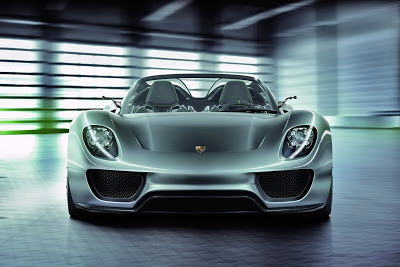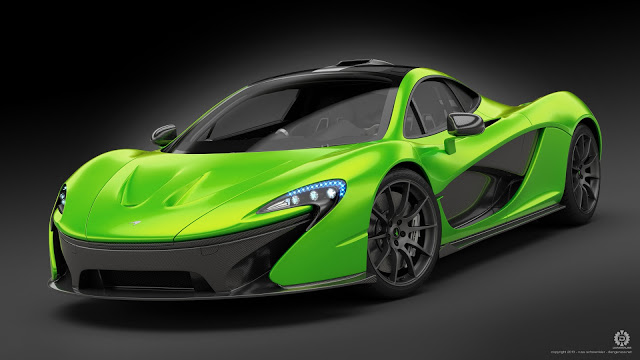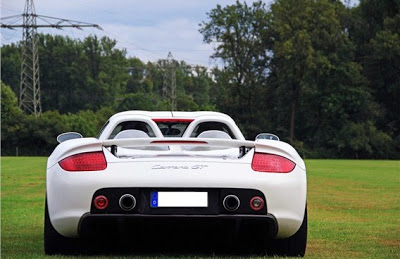What a year 2013 has been for car enthusiasts. It’s safe to say that, thus far, this decade has served up arguably the most significant paradigm shift in supercar history since the famed Ferrari F40 broke the 200 mph barrier in the late 80’s. Huge advances in technology mean that today’s supercars carry equally huge power outputs, specification sheets and price tags, partly as a response to the ever-burdening need for economical efficiency. However, is the purpose of the supercar to address environmental issues or should that not be the reserve of ‘lesser’ models? To many, myself included, the use of numerous electrical technologies in the pursuit of claimed economy figures and outright power is not a means of progress, but rather a hindrance to a niche of car that ought to represent the ‘ultimate’ driving experience.
An experience that has been promised by the latest crop of supercars: the Ferrari LaFerrari, McLaren P1, and perhaps most controversial, Porsche 918 Spyder. All incorporate different forms of electrical trickery (Ferrari and McLaren opting for HY-KERS systems, Porsche going down the route of battery power) alongside high-powered combustion engines, coupled with state-of-the-art gearboxes and aero packages. All carry substantial seven figure price tags and shame all but a Veyron for rarity levels. Obviously then, they represent a far cry from the analogue supercars of old, but not so obvious is the superiority of today’s global-warmed ultimates.
 Defining what a supercar represents helps to shed some light. This is open to debate, but from my experience and knowledge, supercars (the very best at least) do represent the best Top Trumps contenders, but primarily what they stand for is the pinnacle of the driving experience, Cloud 9 for every person with a trickle of 98 Octane in their veins, and complete disdain for everything else (economy figures, CO2 emissions) that gets in the way of delivering the purest driving experience on four wheels. An experience dominated by not just the totality of the performance and speed on offer, but the nature of the performance too, something today’s supercars seemingly don’t emphasise enough. Case in point: the 918 Spyder makes use of a 4.6 litre V8 producing over 420 kW in conjunction with lithium-ion batteries, making for a total power output of 661 kW, a truly mesmerizing figure, especially considering that Porsche’s last ultimate speed machine, the Carrera GT, produced ‘only’ 451 kW. Yet the heavy batteries means the 918 has to hurl around a porky 1700 kg, over 300 kg’s more than the CGT. Of course, the 918 will show the CGT a clean pair of heels in every performance barometer, and at the flick of the switch produce absolutely no chemicals from it’s top mounted exhaust outlets, but again I ask, is this all that supercars are about? Supercars should be pure, triple distilled, master of one trade, loud, dirty and just a bit crude, and for all it’s impressive technology, the 918 is none of those things. On the contrary, the CGT is regarded by many to be one of the all-time greats, not because it was the fastest (slower than its contemporaries, Ferrari Enzo and Pagani Zonda in fact) or biggest game changer, but because what it offered was an unplugged sensory overload and engaged the driver like no other. Will the 918 be remembered in the same light? I’m not so sure. What’s more, the 918 showcases Porsche’s amazing engineering talents, particularly in the use of new materials in order to keep weight down, yet it’s all a bit paradoxical one they’ve lobbed heavy battery packs in the middle of it all. Ask yourself this, what gets you salivating more – a hybrid powered response to today’s environmental climate, or a stripped out, lightened and naturally aspirated riposte to everything but the sheer experience of driving? I know which one I’d choose.
Defining what a supercar represents helps to shed some light. This is open to debate, but from my experience and knowledge, supercars (the very best at least) do represent the best Top Trumps contenders, but primarily what they stand for is the pinnacle of the driving experience, Cloud 9 for every person with a trickle of 98 Octane in their veins, and complete disdain for everything else (economy figures, CO2 emissions) that gets in the way of delivering the purest driving experience on four wheels. An experience dominated by not just the totality of the performance and speed on offer, but the nature of the performance too, something today’s supercars seemingly don’t emphasise enough. Case in point: the 918 Spyder makes use of a 4.6 litre V8 producing over 420 kW in conjunction with lithium-ion batteries, making for a total power output of 661 kW, a truly mesmerizing figure, especially considering that Porsche’s last ultimate speed machine, the Carrera GT, produced ‘only’ 451 kW. Yet the heavy batteries means the 918 has to hurl around a porky 1700 kg, over 300 kg’s more than the CGT. Of course, the 918 will show the CGT a clean pair of heels in every performance barometer, and at the flick of the switch produce absolutely no chemicals from it’s top mounted exhaust outlets, but again I ask, is this all that supercars are about? Supercars should be pure, triple distilled, master of one trade, loud, dirty and just a bit crude, and for all it’s impressive technology, the 918 is none of those things. On the contrary, the CGT is regarded by many to be one of the all-time greats, not because it was the fastest (slower than its contemporaries, Ferrari Enzo and Pagani Zonda in fact) or biggest game changer, but because what it offered was an unplugged sensory overload and engaged the driver like no other. Will the 918 be remembered in the same light? I’m not so sure. What’s more, the 918 showcases Porsche’s amazing engineering talents, particularly in the use of new materials in order to keep weight down, yet it’s all a bit paradoxical one they’ve lobbed heavy battery packs in the middle of it all. Ask yourself this, what gets you salivating more – a hybrid powered response to today’s environmental climate, or a stripped out, lightened and naturally aspirated riposte to everything but the sheer experience of driving? I know which one I’d choose.
This is not meant to be a criticism of Porsche, just an acknowledgement that the 918 appears to be most handicapped by it’s hybrid system and that the CGT is perhaps the last truly analogue supercar, sporting a manual gearbox and naturally aspirated V10. The same sentiments could be applied to any of the three new contenders. The P1 is in stark contrast to the ultra-focused F1, and the LaFerrari and even starker contrast to what is arguably the greatest supercar ever made, the F40, a car bereft of traction control even.
Of course, there are good reasons for progress, and many manufacturers say that these limited-run exotics create a gene pool of sorts that filters technology down to more attainable models. They also say that in these climate conditions, hybrid and electric power are necessary. Yet in cars that have production runs of less than a thousand, are their impacts on the environment that significant? Perhaps I’m being unrealistic.
Don’t get me wrong though, this is not a downer on the latest crop of supercars. Given the recent dislike of anything with a combustion engine, the fact that manufacturers produce cars of this nature is a cause for celebration and not for disappointment. The concluding point, in my opinion, is that today’s car industry demands a wider repertoire of talents from manufacturers, even those of the supercar fraternity, and is dominated by marketing, hence the need for astonishing economy figures. Forgive me though, for wishing we were still in a time of engineers working through the night, in sheds, on projects that stood for just one thing – driving pleasure.
Proudly written by Mohammed Patel in conjunction with Zero 2 Turbo



